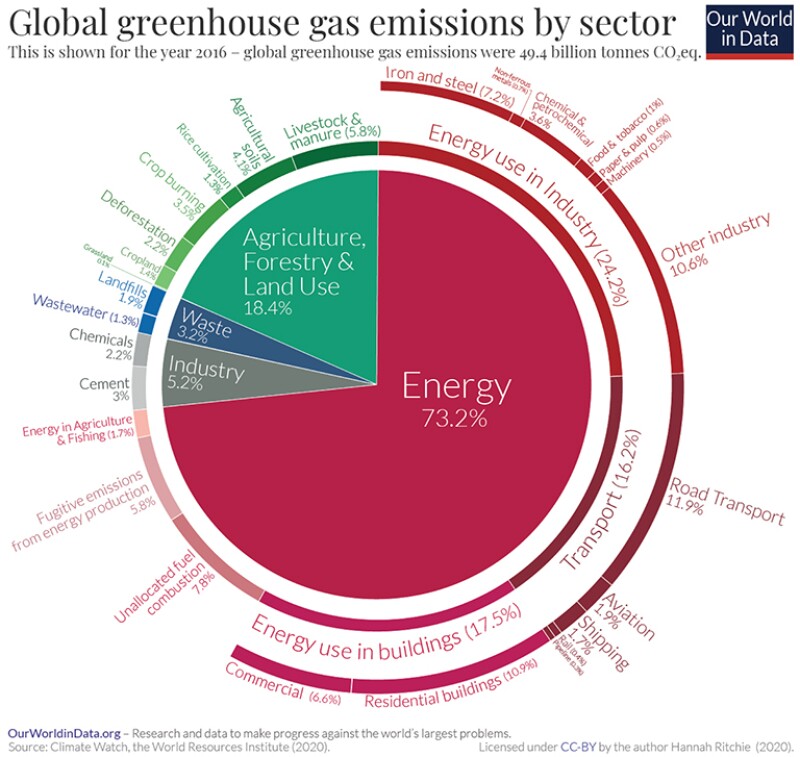The nature and integration of oil and gas professional activities and practices in the 21st- century energy industry is rapidly evolving. Nowadays, career planning is incomplete without an evaluation of the expected minimum breadth and depth of knowledge required across multiple disciplines. This article provides an assessment of what a petroleum graduate is expected to know or pick up within their first 6 months in the industry. Over the first 5 years, most professionals want to amass sufficient knowledge and experience for obtaining SPE certification or an equivalent engineering certification in their chosen discipline.
Certification and cross-functional knowledge expectations are expanding to cover emerging topics, including digital technologies, sustainability, and energy transition alongside the traditional petroleum engineering disciplines. This article is designed to place SPE Young Professionals (YPs) in a better position to utilize the available SPE resources, including the updated competency matrices and the Competency Management Tool (CMT).
These tools facilitate the development of professional and technical expertise for evolving roles and responsibilities by helping to identify competency gaps. Working in integrated teams means it is important to develop a reasonable breadth and depth of knowledge about other SPE technical functions, as shown in the new competency matrices.
The SPE Training Portal and catalogue can help in
- Reviewing cost-effective resources available to address those gaps.
- Developing a self-paced learning program to achieve professional status or that dream job or access to a preferred business sector within the industry.
The CMT is intended to provide a lifetime career management guide, with competency not only for entry-level assignments but also for experienced professionals, supervisors, and functional managers.
Introduction
Addressing the skills gaps and creating a flexible and affordable professional development plan in today’s energy industry require an understanding of both the traditional skills and key contemporary challenges. Societal, regulatory, and professional expectations are evolving to address these challenges, some of which derive from natural events and human-caused phenomena. For example, changes in global weather patterns will impact engineering design specifications and lead to rising air-conditioning demand for power in many places. Yet, the large developing economies (e.g., India, China, Africa, and Latin America) are providing demonstrable evidence that positive economic development is almost impossible without fossil-based energy sources. Therefore, at COP26 the climate change mitigation strategies and commitments were mainly constrained in these regions. In addition, examples from some of the developed economies, including France, UK, Germany, and other EU countries, indicate concerns around energy security, domestic mining, employment/job security, and baseload reliability that are driving economic dependence on traditional energy sources in addition to renewables (Brauers, Oei, and Walk 2020).
It is apparent that fossil fuels and renewable alternatives will both play critical roles in the evolving and growing energy mix depending on the weather, economic and political circumstances, and the societal pressure on respective governments in addressing climate-change risks. Yet, primary energy must be converted to secondary energy at varying scales to meet the end users’ energy demand (Lewandowsky and Smith 2011) in the transportation, industrial, power generation, and housing sectors of the global economy (Fig. 1). In addition, the second law of thermodynamics suggests that the conversion of primary energy (i.e., fossil fuels or renewables) to secondary energy (e.g., heat, electricity) increases entropy (i.e., disorder) on Earth as a closed system (Anifowose, Battalora, and Dunlop 2020). This means that with the soaring energy demand, it is unlikely that a rise in renewable energy generation can slow entropy (e.g., greenhouse-gas emissions) even with technologies such as carbon capture, utilization, and sequestration (CCUS) deployed at scale, based on petroleum engineering skills.

So, how can a petroleum engineer thrive in this rather uncertain energy industry and what transferable skills can be deployed across the evolving energy mix? How can the revised competency matrices and the Competency Management Tool help? What does a candidate need to know to pass the SPE or regional professional engineering association certification exams? How can a petroleum graduate utilize the competency matrices and CMT to address skills gaps in the 21st-century energy industry? These and other issues are addressed in the subsequent sections of this article.
An Overview of the Minimum Competency Breadth and Depth
As discussed in an article by Anifowose and Nickie in The Way Ahead (2022), SPE uses the terminologies
- Minimum competency breadth to define Level 1, basic understanding.
- Minimum depth to reflect the knowledge and skills that should be picked up as a trainee engineer over the first 3 to 7 years in our industry (Level 2).
In the newly approved matrices, these column definitions have not changed, but the “Above Minimum Competence” column was removed; it was considered unnecessary since the core objective for the matrices was the expected progression to a professional engineering status. To be sure, we highlight below the definitions for each of the two columns.
Minimum competency breadth. What a recent graduate from a petroleum engineering curriculum should know or pick up within 6 months of graduation. Non-petroleum engineering graduates should be competent in these areas to be called a petroleum engineer.
Minimum competency depth. What an engineer with, say, 5+ years of experience and knowledge should know within their chosen discipline. At this competency level, an engineer should be capable of obtaining the SPE certification or an equivalent engineering certification in another jurisdiction.
Following are links to the tables that detail the minimum competency breadth and depth for each of the eight SPE competency matrices.
General Engineering. The competency matrix for general petroleum engineering has 18 specific tasks across the minimum breadth and depth columns.
Drilling Engineering. The competency matrix for drilling engineering has 12 specific tasks across the minimum breadth and depth columns.
Completion Engineering. The competency matrix for completion engineering has 14 specific tasks across the minimum breadth and depth columns.
Production Engineering. The competency matrix for production engineering has 16 specific tasks across the minimum breadth and depth columns.
Reservoir Engineering. The competency matrix for reservoir engineering has 29 specific tasks across the minimum breadth and depth columns.
Health, Safety, Environment, and Sustainability. The competency matrix for health, safety, environment, and sustainability has 21 specific tasks across the minimum breadth and depth columns.
Projects, Facilities, and Construction Engineering. The competency matrix for projects, facilities, and construction engineering has 25 specific tasks across the minimum breadth and depth columns.
Data Science and Engineering Analytics. The competency matrix for data science and engineering analytics has 15 specific tasks across the minimum breadth and depth columns.
The Competency Management Tool (CMT)
Continual professional development (CPD) goes far beyond the requirements of professional certification and gets increasingly complex over a career of ever-changing roles and responsibilities. Therefore, for SPE members and graduates, it is important to be able to assess
- The breadth and depth of their knowledge in the context of a specific job assignment or role.
- Their skill gaps for their current role, their most likely next assignment, and their dream job, or role that might be achievable in the next 5 years or so.
- Resources in support of their learning or continual professional development plan.
In the light of the above, SPE launched the CMT in 2014 in collaboration with a leading commercial training and competency development corporation, IHRDC (International Human Resources Development Corporation), based in Boston, Massachusetts. The SPE CMT tool is freely available to SPE members and can be accessed via the Training Portal on the IHRDC website.
Some earlier articles in JPT and The Way Ahead have described the CMT and the rationale behind the initiative (Jain and Ogle 2014; de Almeida 2015; Jain and Donohue 2016; and more recently, Howes and Taylor 2022).
For members new to the CMT, guidance and FAQs are available.
The CMT is intended to provide a lifetime career management guide with competency models not only for entry-level assignments but also for experienced professionals, supervisors, and functional managers in operating companies and the service sector. The CMT models cover
- Geosciences
- Well engineering (drilling and completions)
- Production operations
- Projects and facilities
- Health, safety, and environment
- New business development
- Supply chain jobs in an operating company
Business development jobs for an EPC (engineering, procurement, and construction) contractor, a drilling contractor, or an integrated services provider are also addressed in the CMT. The tool is quite versatile in that it not only offers the capability to perform a self-assessment but also helps the user identify learning resources and the tools to develop and track a self-paced learning plan (Fig. 2).

Links Between the Revised SPE Matrices, the CMT, and the SPE Certification Exam
The number of competency matrices were increased to reflect SPE’s eight technical disciplines and advancements in them, as shown in the website links on the preceding page to each of the disciplines’ competency matrix. They are used by academicians to design petroleum engineering curricula so that graduates are equipped with the necessary skills to enter the workforce. At entry level, recent graduates may consult the matrices to confirm their minimum competency breadth in each matrix, and as they progress in their career up to 5 or more years, they may consult the matrices for minimum competency depth (Fig. 2). A next step to manage professional and technical development is to utilize the CMT, which provides the user with a self-assessment, defines gaps relative to a job description in the model, and identifies learning resources to bridge the gaps. It also provides the user with the capability to build a learning plan that is tracked and reassessed as needed.
The matrices and the CMT are readily accessible at any stage of a member’s career. Should a member consider taking the SPE Petroleum Engineering Certification Exam, the matrices and CMT are preliminary resources to use in conjunction with SPE materials specifically designed to prepare a member for the international credential of SPE Petroleum Engineering Certification.
Implications for Career Planning and Job Security
The information in this article reflects ongoing changes in the wider energy industry with potential implications for setting brand new criteria for job specifications, knowledge acquisition, and skills development. Nevertheless, the revised competency matrices are intended be used as guidelines only and are not expected to be used or prescribed for accreditation, hiring, or design of curricula. These matrices are now consistent with the revised SPE technical disciplines, which should be helpful for academia and HR training teams in the energy industry to gauge the knowledge of petroleum engineers. Therefore, it would be prudent for graduates and experienced professionals in the oil and gas industry to familiarize themselves with this array of tools for their career development while ensuring sustainability of their job roles or businesses (Fig. 2).
Conclusions
Changes to our business are being driven by
- The onset of the Fourth Industrial Revolution (i.e., Industry 4.0) where gradual but synchronous integration of physical assets and advanced digital technologies now better support responsive analytics for intelligence-driven decision making.
- The rapid global response to climate change to ensure environmental sustainability based on the perceived contributions that oil- and -gas-related emissions are making to the rising annual temperature, as discussed in the Working Group I IPCC Sixth Assessment Report of 9 August 2021.
Therefore, SPE members’ roles, including those of recent graduates and experienced professionals, are rapidly evolving. Our professional development plans must take note of the potential implications of these changes, and revisions are needed to prepare us for the jobs of the future, as opposed to those traditionally undertaken at the turn of the century. Those who do not continually adapt should be cognizant of what these changes might mean for job security and career progression in the emerging 21st-century energy industry.
The revised competency matrices provide some hints at to what a petroleum engineering graduate is expected to know or learn in their first 6 months on the job and their knowledge progression for obtaining SPE Certification or an equivalent engineering certification in their respective disciplines and region. It is increasingly the responsibility of the practicing engineer to decide how to address these emerging skills gaps. The SPE’s Engineering Professionalism Committee (EPC) hopes to continue to develop tools and materials to support this ongoing effort.
The new competency matrices now include
- Completion engineering
- Health, safety, environment, and sustainability
- Projects, facilities, and construction engineering
- Data science and engineering analytics
We also invite competent hands from academia and industry to join the EPC in accomplishing this important task over the energy transition period. We seek volunteers to join the team in the first quarter of each year via the SPE Volunteer Portal.
Acknowledgments
The authors acknowledge members of the EPC and other stakeholders for their contribution to the new competency matrices. They specifically acknowledge the role played by the immediate past chair of the EPC, Ayasha Nickie. In addition, the EPC is thankful to Mahesh Jayaraman for his steady support throughout the competency matrices review process.
For Further Reading
Anifowose, B. and Nickie, A. 2022. Want To Be a Skilled Petroleum Professional? Cross-Check Your Technical Skills Against These Recently Approved SPE Competency Matrices. The Way Ahead.
Anifowose B., Dunlop J., and Battalora L.A. 2020. Crude Oil and Natural Gas: Key to a Sustainable Energy Future. Book chapter in Affordable and Clean Energy. Encyclopaedia of the United Nations Sustainable Development Goals. Filho, W.L., Azul, A.M., Brandli, L., Salvia, A.L., and Wall, T. (eds) Springer, Cham.
Brauers, H., Oei, P-Y., and Walk, P. 2020. Comparing Coal Phase-Out Pathways: The United Kingdom’s and Germany’s Diverging Transitions. Environmental Innovation and Societal Transitions.
de Almeida, T. 2015. How SPE’s Competency Management Tool Can Boost your Career Development. The Way Ahead.
Howes, S. and Taylor, R.W. 2022. Addressing the Leadership Gap in the Energy Industry. Journal of Petroleum Technology.
Jain, A. and Ogle, K. 2014. A Competency Management Tool for SPE Members. Journal of Petroleum Technology.
SPE 181564 2016. Managing Competency in a Low Oil Price Environment: SPE Offers an Expanded Competency Management Tool to its Members by A. Jain and B.R. Donohue.
Lewandowsky, S. and Smith, S. 2011. Energy Is Neither Renewable Nor Sustainable. Shaping Tomorrow’s World blog.

Babatunde Anifowose is a university lecturer and researcher with more than 20 years’ work experience in the areas of sustainability and environmental assessment of the oil and gas industry value chain. He was course director for the MSc Petroleum & Environmental Technology program at Coventry University, UK. He is a member of the Engineering and Physical Sciences Research Council’s Peer Review College. Anifowose was on the board of directors of the SPE Sustainable Development Technical Section (2017–2021). He is chair of the Engineering Professionalism Committee (2021–2022). He holds a diploma in data processing (computer science), BSc and MSc degrees from the University of Lagos, Akoka-Nigeria, and a PhD in environmental science from the University of Birmingham, UK.

Linda A. Battalora is a teaching professor in the petroleum engineering department at the Colorado School of Mines. She is a Ben L. Fryrear Chair for Innovation and Excellence, Payne Institute for Public Policy Faculty Fellow, and a Shultz Humanitarian Engineering Fellow. Prior to joining the faculty at Mines, Battalora served in various roles in the oil and gas industry including petroleum engineer, attorney, and international negotiator for hydrocarbon project development. She is chair of the SPE Diversity & Inclusion Committee and a past chair of the SPE Sustainable Development Techincal Section. She is a member at large with the CCUS and the Research & Development technical sections and a member of the Engineering Professionalism Committee. She is an SPE Distinguished Member and was an SPE Distinguished Lecturer in 2019–2020. Her research areas include health, safety, environment, and sustainability, CCUS, and the circular economy. She holds BS and MS degrees in petroleum engineering from Mines, a law degree from Loyola University New Orleans College of Law, and a PhD in environmental science and engineering from Mines.

Robert Pearson is the technical director of the Production and Facilities discipline and founder of Glynn Resources, a consulting company based in Calgary. He has worked in production operations, completions engineering, and field development planning for onshore, offshore, frontier, and unconventional developments in several geographic regions. Pearson spent 10 years at Shell International prior to moving to Canada with Petro-Canada, now Suncor, as a district production operations supervisor. He cofounded and was subsequently president of APA Petroleum Engineering, which is now part of the RPS Energy Group. He worked for the group in Singapore and Brisbane before returning to Canada in 2015. Pearson has led and facilitated training in production and completions engineering and integrated subsurface studies for more than 35 years for major operating companies, professional societies, and International Human Resources Development Corp. Pearson holds a bachelor’s degree in mining engineering from the University of Newcastle-upon-Tyne and trained as a petroleum engineer at the Shell Training Center in The Hague. He is a registered professional engineer in Alberta.

